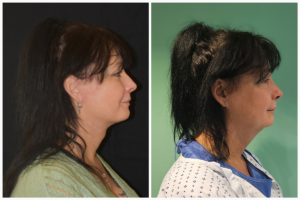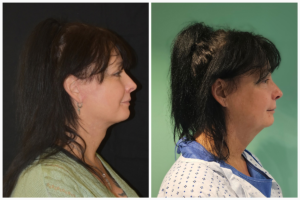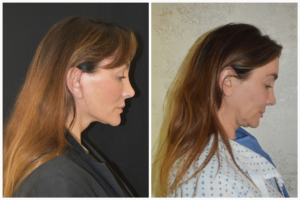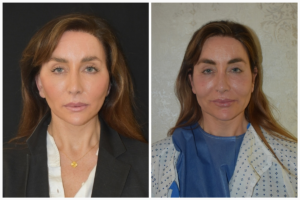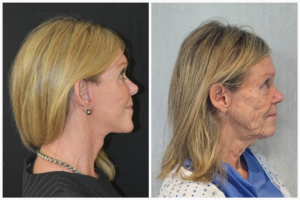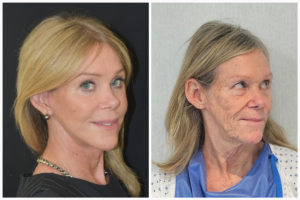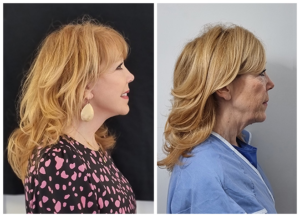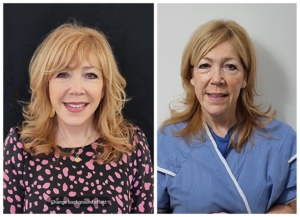The deep plane facelift, originally described by Sam Hamra in 1990, utilises a plane of dissection below the superficial muscular aponeurotic system (SMAS) of the midface. This approach allows the resection of key facial retaining ligaments. This very important step in facelift surgery makes a maximum mobilization of the superficial soft tissue of the face …
All facelift techniques have the goal of manipulating the SMAS to lift it back in its youthful position. A pure skin lift is a very simple, but sub-optimal, way to perform a facelift by pulling only the facial skin over the the dropped/aged subcutaneous fat tissue and SMAS. A skin-lift won’t be able to reconstruct the youthful position of the facial tissue under the skin to create the V/heart shape of the younger face. The result is a stretched look or a look of an aged face with smooth skin. For quick lunch-break facelifts under local anaesthesia this technique might still be used on the uninformed patient.
The technique of the SMASectomy will simply resect one or two strips of SMAS tissue at strategic places and simply adapt the resulting SMAS wound edges. This is a widespread technique which I have never been a fan of, since the result could be very “mask-like”. Since SMAS tissue was resected rather than conserved, the much-needed build-up of facial volume, needed to achieve the illusion of a young face, could not be achieved. Since the facial ligaments were left totally intact, the deepened nasolabial folds or marionette lines could not really be smoothened as again is needed to achieve a younger appearance.
The SMAS plication lift introduced by a Swedish plastic surgeon in the early 1970s is a globally recognised facelift technique. After detaching the facial skin from the underlying facial tissue (fat, SMAS), sutures are placed strategically to lift the SMAS and the SMAS plicated. The facial ligaments are not released. The SMASectomy tissue was preserved which I find vital in treating an ageing face that generally loses its fat and thus volume. Surgeons have their specific preferences for the direction they plicate the SMAS to get the most rejuvenated outcome. Placing them more sideways doesn’t result in a natural and rejuvenated look since the ligaments which fixate the facial tissue at strategic places in the face will block tissue which lies medial to these ligaments from being pulled into the desired position. I find it is more helpful to strictly vertically pull the SMAS with sutures which run from the middle of the face near the nasolabial folds to the side right in front of the ear. The further the tissue has dropped, the bigger the “bite” of the needle/suture will need to be to attach the lifted SMAS along the zygomatic arch (cheekbone). In this way the SMAS and jowls could be lifted and at the same time volume built up over the midface. In a last step the skin is lifted and draped over the new, younger facial contour. I achieve amazing results with this technique. Since the SMAS plication lift works superficially on the SMAS instead of where the extended SMAS or deep plane facelifts work, the danger for facial nerve damage is much lower and this facelift technique is considered as safe.
As explained in above, both the extended SMAS facelift, the deep plane facelift and my signature vertical dual-plane facelift dissect under the SMAS in the so-called “deep plane” of the face and release the facial ligaments. In this way the dropped facial tissue of the middle and lower face can be fully lifted when the flap is pulled up. Nasolabial folds, marionetted lines and jowls are drastically reduced and rejuvenated. The results of these facelifts are dramatic and natural at the same time.


